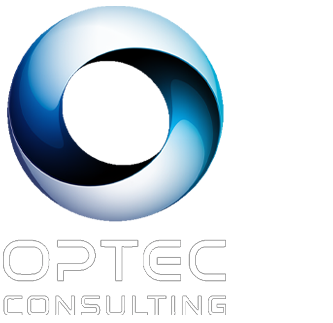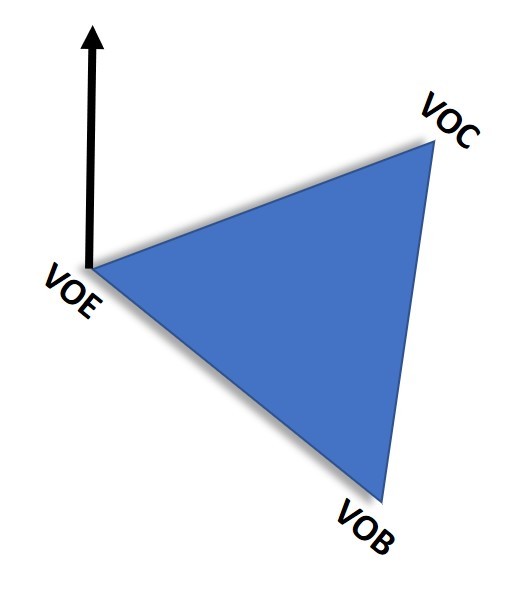We’re Different! Deploying Lean Six Sigma in a Sales and Marketing Organization
By J. Kenneth Feldman, PhD, Principal Consultant, Optec Consulting LLC
The phrase, “We’re different!” is one that Deployment Leaders often hear from various segments of their organizations while attempting to deploy a change initiative. It is no different when attempting to deploy a Lean Six Sigma (LSS) process in any type of organization. As an organization expands its efforts to deploy Lean Six Sigma, the phrase “We’re different” is heard once deployment has worked its way through manufacturing, administration and even R&D and now finds itself at the doorstep of implementation in the Sales and Marketing organization. My experience indicates that the statement, “We’re different” might have some validity in this case. I will explore ten reasons that Sales and Marketing organizations claim to be different in their implementation of LSS. In some cases, they may be correct in that claim and might require some flexibility and creativity to be successful in their deployment. In other cases, they may really be no different than many other organizations and are mistaken in their claim. I will point out where their claim is false and why. I will also discuss those cases where their claim is valid and what can be done to “make it work”.
Top 10 Reasons why those deploying LSS in a Sales and Marketing organization claim to be different.
1. It’s not always clear who is the Customer
A first step in any LSS implementation is the determination of the Customer. Gathering Voice of the Customer and improving processes are all focused on improving the customer experience with our organization, products and services. If we don’t know who the Customer is, we are blocked right from the start. It is usually clear who the Consumer of the product is but who is the Customer? Who should we seek to influence or inform or seek out? Who should we gather Voice of the Customer from? Who should we market and sell to? Certainly we can understand why Sales and Marketing claim that they are different. But the fact is this one is only partially TRUE. For example, the manufacturers of food products market heavily to the public yet it is the food chains that purchase the product from them. The Consumer eats and pays for the product. While Dupont may advertise Corian to the public it is manufacturers and fabricators who buy the product directly from them. An Interior Decorator may influence a client to buy Corian for their kitchen. The Consumer will buy it and use it from the fabricator. The model of a manufacturer trying to directly influence a Consumer is quite common with intervening organizations actually being the Customer. While the Sales organization is usually aware of who the customer is and focuses on that, the Marketing organization is usually just involved on the Consumer side.
2. Measuring the Impact of Marketing and Sales efforts is Challenging
What is the effect of an advertising campaign? For that matter, what is the impact of a sales rep calling on a Customer? Measuring this impact is difficult. In fact, if there is an impact, there may be a time lag between the sales call and the writing of an order. In addition, to add to the complexity of the situation, changes to multiple aspects of the sales and marketing efforts go on simultaneously, which adds to the difficulty of identifying the single factor that actually impacted sales. So is this real? TRUE. And highly relevant. Does this preclude the use of Lean Six Sigma? NO! But it does focus attention on the need for projects related to the metrics used to drive the business. One specific area of Lean Six Sigma that is pertinent is Measurement System Analysis. This is a highly valuable area of attention when a Lean Six Sigma deployment is first undertaken. Measurement systems are often bottlenecks to improvement. Fixing and improving the measurement systems have, in some cases, identified that there was no improvement to the underlying process actually necessary; by fixing the measurements, the so-called problem went away. As to the issue of multiple factors changing simultaneously, there is an area of Lean Six Sigma called Design of Experiments or Conjoint Analysis that can address this. While many factors under the Marketing and Sales organization’s control are changing at the same time, Lean Six Sigma can address these issues and improve the effectiveness of the organization.
3. Our Industry is Highly Regulated
In the United States, the Federal Drug Administration oversees much of the activities of pharmaceutical firms and to a lesser extent many food companies. Similar governmental institutions oversee these industries in other countries. This oversight tends to limit the opportunity for change. This especially affects which products can be sold, as well as the actual manufacturing processes. But there is also an impact on sales and marketing. Limits and controls on the use of promotional items is just one area that demonstrates this impact. Many organizations, due to the long conservative oversight of governmental agencies such as the FDA, are highly conservative and themselves highly resistant to change. Is this a valid distinction of Sales and Marketing in those industries? Probably TRUE. We say “Probably” because there are regulations to be followed in many industries, but probably none as invasive as in the marketing and sales of companies like pharmaceuticals. Does this characteristic of those industries preclude the changes that Lean Six Sigma would foster? NO! The impact of this highly conservative organization is that more care will be necessary to explore and identify which limits are real boundaries, and which are simply perceived to be boundaries, but can be safely ignored. This is similar to the telecommunications industry when it evolved from a monopoly to a competitive environment. One aspect of Lean Six Sigma is Change Management. This deals with the people-related issues of facilitating change. Thus, Lean Six Sigma offers a methodology to deal with this resistance to change.
4. Sales and Marketing is not a process, it is all about relationships
While no one argues that there are Sales and Marketing processes, the understanding and acceptance of this premise is not always fully appreciated by Sales and Marketing personnel. Fully documented process maps and flows don’t exist to the same extent as that found in manufacturing and other organizational entities. In fact, they might not exist at all. LSS is a fundamental departure from the traditional thinking of marketing executives. Instead of viewing what is done as a series of processes with often common and overlapping activities, marketing traditionally views what they do as independent projects with little or no link to what has been previously done in the past. No one will argue that a good relationship between the Sales Rep and the Customer is important. It might be necessary but not sufficient. Customers today are almost overwhelmed by the number of sales reps calling on them. As a result, while a good relationship is important, unless there is some value being added by the sales call the relationship alone won’t get the Customer to write an order. We all know of a sales rep who always seems organized and who plans out what he/she is going to do on every sales call. They seem to be able to efficiently plan their day to maximize the value added to the Customer and to optimize their own time. While they may not be the most social sales rep we know, they certainly seem to be outselling most of their peers. Possibly they understand that there is a selling process and that success is not just dependent upon showing up, handing out promotional items and being friendly. Marketing professionals often treat a project as an isolated one of a kind event. Yet, the activities and steps that are followed to execute a marketing project seem quite similar from project to project. Marketing professionals often complain that process thinking may inhibit creativity. That is false. Developing a repeatable process will overcome the inefficiencies that occur when projects are viewed as standalone events thus leaving more time for creative work. We have to conclude that in this case, the claim of “We are Different” is FALSE.
5. Gathering Voice of the Customer (VOC) can be difficult and expensive
Most Marketing organizations are pretty adept at gathering VOC (Voice of Consumer) and spend a good deal of time and money identifying consumer tastes, insights and behaviors. Sales on the other hand is not typically proactive in soliciting VOC (Voice of Customer). Often what they discover is a matter of reaction to comments and actions of the customer rather than a proactive seeking of insight and understanding. While Consumer information may be expensive there is nothing prohibitive in gathering Customer information. I rate this issue as FALSE.
6. Data is often unavailable and is discrete in nature
Gathering field data requires great effort. Although some typical data such as call activity and order writing patterns are usually available, desired performance data is usually not as easily available. Much of the sales rep performance data consists of direct observation and subjective assessment. A good deal of quantitative data is often recorded by the sales rep. This might include the number of sales calls for the day, or the time spent with the Customer or number of details delivered or whether second and third messages were given, etc. While this data is useful for analysis, the key to understanding the process and improving it lies with the non quantitative or discrete data. Here we gather how well those activities are performed not just whether they were performed or not. Furthermore, how people feel or react to sales reps, products, advertising, messages, etc are more difficult to capture. We hear that Customers value such things in the sales rep as trust, “value my time” and knowledge. Measurement of those subjective characteristics is more challenging yet important. In reality, the sales organization is no different than any other organization with a far flung decentralized work force such as service techs . All organizations need to have a handle on how their people are performing. Just relying on gross sales or share of market numbers is not adequate if we want to improve performance. Similarly, we need to gather data on the factors which truly influence the customer’s buying decisions. We need to identify those variables which impact sales or market share so that we can take action on those to improve. Marketing needs to accurately know the impact and effect of their projects and actions. What are the things that get us the most return on our investment? While our experience has been that sales and marketing has significant opportunity to get better in collecting meaningful and actionable data, they are not much different than many other organizations in this regard so their claim of difference is FALSE.
7. Decentralization presents challenges for Improvement Team efforts
In a plant or office environment, it is relatively easy to have frequent meetings for the Team to work through the LSS methodology. Sales reps are decentralized and pulling them from their field activities requires great commitment and flexibility. Many sales organizations are faced with a similar problem. They are reluctant to have Team members travel to a central location to participate in improvement activities. The cost of travel coupled with the lost sales opportunities adds considerable expense to improvement team activities. This is a common problem. More creative approaches utilizing electronic meeting technology is often used for decentralized sales organizations. Teams that function in a centralized location have the luxury of having weekly or biweekly meetings of short duration usually one to two hours. When face to face meetings are required in a decentralized sales force to work through some of the critical steps of an improvement team project, they are often designed as a full day/multi day event to minimize overall travel time and expenses. These intense sessions remind us of more of a Kaizen event rather than the typical improvement team meeting. Many organizations face the same situation so a claim of difference is FALSE.
8. Sales and Marketing leadership view the Lean Six Sigma (LSS) methodology and tool kit as being only for Manufacturing
If we go with the assumption that sales and marketing are indeed a series of processes and that all processes contain waste and that the removal of that waste can yield improvements, then it is clear that LSS is indeed applicable to sales and marketing. While many of the more powerful and rigorous statistical methods used in other parts of the organization may not always be appropriate for the Sales and Marketing organization, there are plenty of basic tools such as Value Stream Mapping, Cause and Effect, Brainstorming, Histograms, Box plots and Run charts that can suffice for many of the projects that are done in Sales and Marketing. In situations where we have sufficient amounts of valid data, there is no reason that Sales and Marketing people can’t utilize the more advanced technical tools of both Lean and statistics. The use of many tools in the LSS tool kit are predicated upon a stable process but in many instances the Sales and Marketing functions are very dynamic. Unlike many other parts of the organization, sales and marketing must be very agile and ready to pounce on new market opportunities or to react to rapid changes in the marketplace. Sometimes the rigor of LSS can inhibit that ability. For example, control charts are one of the mainstay tools of LSS. It is based on a stable process. In the case of sales and marketing, we would not like to see such key metrics as sales or share of market remain stable. The goal is to drive an increase in both. But, again we must state that there is nothing unique and different about this issue as it relates to sales and marketing so their claim of difference is FALSE. Many projects in many organizations utilize just the most basic tools in the tool kit with great success. Many sales organizations seek to have an increasing trend for sales and share of market. The LSS tool kit is just as applicable for Sales and Marketing as it is for Manufacturing, Administration and Research.
9. Many External Influences Affect Sales.
There are many outside factors that determine product sales. At a macro-economic level, factors such as competition, government regulation and shifting consumer preferences all impact Sales and Marketing. At a smaller scale, there are issues around subtle changes to the marketplace, such as the push for healthier alternatives or energy conservation, that distinguish the marketing environment. Many organizations have recalls or “bad press” which are external influences affecting sales. Is this a valid argument that Sales and Marketing is different? Or that this means that Lean Six Sigma will be ineffective in making improvements? This is FALSE. This does not prevent Lean Six Sigma from effectively identifying opportunities for improvement in the Sales and Marketing efforts. As process-focused thinking spreads through the Sales and Marketing organizations, opportunities to execute activities at a faster pace, with less waste will naturally surface.
10. Barriers to Entry
Many organizations exist in an environment where it is difficult for a new company to gain entry into the industry. Is this real? TRUE. Does this mean that Lean Six Sigma will not work? NO! It provides greater impetus to use Lean Six Sigma. One of the key characteristics of the Lean portion of Lean Six Sigma is to identify opportunities to execute tasks and activities (as part of a process) faster, and with less waste. So, the faster one can bring a product to market, the more time one has to enjoy the competitive advantage. The faster one can evaluate the effectiveness of a marketing campaign, the sooner one will be able to adjust and improve that same campaign.
Overall, some of the reasons given as to why Sales and Marketing are different are valid. The metrics used to monitor performance definitely need attention. Gathering the Voice of the Customer is difficult, but can be done. While all of these characteristics of the business environment create a distinctive situation, they are amenable to the deployment of Lean Six Sigma to improve the speed and effectiveness of the processes and tasks undertaken in the Sales and Marketing function.








